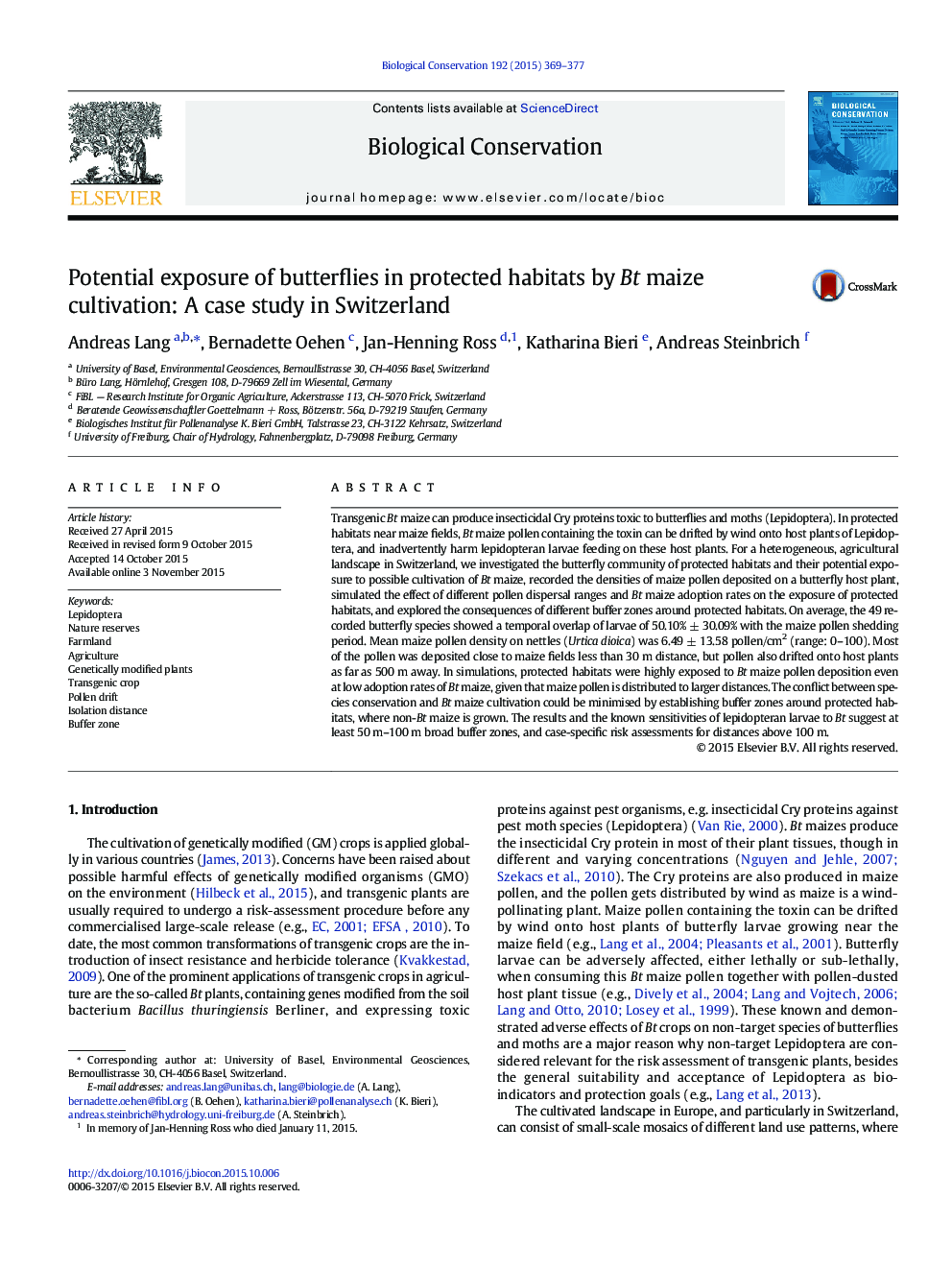| کد مقاله | کد نشریه | سال انتشار | مقاله انگلیسی | نسخه تمام متن |
|---|---|---|---|---|
| 6298610 | 1617909 | 2015 | 9 صفحه PDF | دانلود رایگان |
عنوان انگلیسی مقاله ISI
Potential exposure of butterflies in protected habitats by Bt maize cultivation: A case study in Switzerland
ترجمه فارسی عنوان
قرار گرفتن در معرض بالقوه پروانه ها در محیط زیست حفاظت شده توسط کشت بوته ذرت: مطالعه موردی در سوئیس
دانلود مقاله + سفارش ترجمه
دانلود مقاله ISI انگلیسی
رایگان برای ایرانیان
کلمات کلیدی
لپدپرتا، ذخایر طبیعت، زمین کشاورزی، کشاورزی، گیاهان اصلاح شده ژنتیکی، محصول ترانس ژنیک، گرده رانش فاصله جداسازی، منطقه حائل،
موضوعات مرتبط
علوم زیستی و بیوفناوری
علوم کشاورزی و بیولوژیک
بوم شناسی، تکامل، رفتار و سامانه شناسی
چکیده انگلیسی
Transgenic Bt maize can produce insecticidal Cry proteins toxic to butterflies and moths (Lepidoptera). In protected habitats near maize fields, Bt maize pollen containing the toxin can be drifted by wind onto host plants of Lepidoptera, and inadvertently harm lepidopteran larvae feeding on these host plants. For a heterogeneous, agricultural landscape in Switzerland, we investigated the butterfly community of protected habitats and their potential exposure to possible cultivation of Bt maize, recorded the densities of maize pollen deposited on a butterfly host plant, simulated the effect of different pollen dispersal ranges and Bt maize adoption rates on the exposure of protected habitats, and explored the consequences of different buffer zones around protected habitats. On average, the 49 recorded butterfly species showed a temporal overlap of larvae of 50.10% ± 30.09% with the maize pollen shedding period. Mean maize pollen density on nettles (Urtica dioica) was 6.49 ± 13.58 pollen/cm2 (range: 0-100). Most of the pollen was deposited close to maize fields less than 30 m distance, but pollen also drifted onto host plants as far as 500 m away. In simulations, protected habitats were highly exposed to Bt maize pollen deposition even at low adoption rates of Bt maize, given that maize pollen is distributed to larger distances. The conflict between species conservation and Bt maize cultivation could be minimised by establishing buffer zones around protected habitats, where non-Bt maize is grown. The results and the known sensitivities of lepidopteran larvae to Bt suggest at least 50 m-100 m broad buffer zones, and case-specific risk assessments for distances above 100 m.
ناشر
Database: Elsevier - ScienceDirect (ساینس دایرکت)
Journal: Biological Conservation - Volume 192, December 2015, Pages 369-377
Journal: Biological Conservation - Volume 192, December 2015, Pages 369-377
نویسندگان
Andreas Lang, Bernadette Oehen, Jan-Henning Ross, Katharina Bieri, Andreas Steinbrich,
